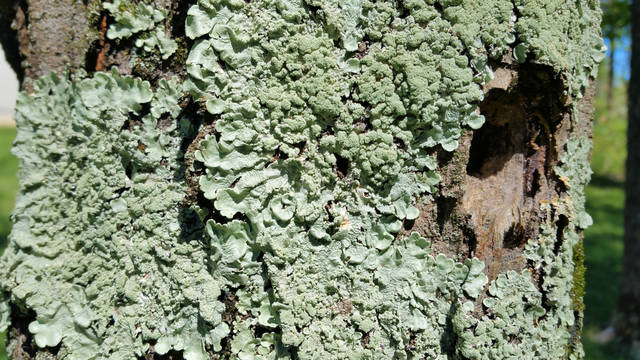OUTSIDE: Looking at lichens
Published 1:42 pm Tuesday, March 3, 2020

Lichens
|
Getting your Trinity Audio player ready...
|
By Steve Roark
Tri-State Outside
The above high rainfall we’ve had past couple of years seems to have caused a boost in lichens. Lichens are those flat light green blotches or hair-like tufts you see growing on tree bark and rocks. Like all life on Earth, lichens have found a niche where they can grow without much competition. Most older trees in our area have at least a small colony growing somewhere.
There are several lichen species in our area, the most common type being Parmelia. This is the one that looks like flat, crinkled splotches of green or pale blue. Another common one is Old-Mans’ Beard, which hangs down in small tufts of branching, pale green fibers. There may be small discs present that are fruiting bodies which produce spores. A more colorful Lichen variety at least in the Spring is British Soldiers, which grows on the ground or dead wood. It has a crusted base with small, erect hollow tubes that are capped with bright red knobs that are the fruiting bodies, which look like the red caps that British soldiers wore during the Revolutionary War. A lichen found in the mountains on bluffs and large boulders is Rock Tripe. When moist, this one grows in large brown sheets that are leathery and attached by a stout cord. When dry it curls up and turns black. There are other rock lichen species that come in a wide variety of bright colors.
Lichens are a biological oddity in that they are both plant (algae) and animal (fungus). The relationship is called “mutualism” and each partner benefits from working together. The algae produce food for itself and the fungus, and in return the fungus provides protection from adverse conditions such as drought. Some botanists disagree and think the relationship is more a host-parasite relationship in which the fungus is a weak parasite of its algal host. Either way, it makes lichen a unique life form.
Lichens have an important role of converting lifeless rock into soil that can then support other life. They can literally grow on a rock, and have acidic properties that slowly break down stone and converting it over the eons to soil sized particles. Humans have used lichens for food, medicine, and dyes. They are a crucial food source for caribou in the extreme north, where conditions on the tundra are so harsh that only lichens can grow there.
I get asked now and then if lichen growing on the bark is harmful to the tree. Most tree experts say the lichen does not harm the tree and merely using the trunk as a high-rise apartment to get away from the more highly populated ground. I have wondered if a high population of lichen that completely covers the bark might cause moisture retention that would soften the bark and perhaps cause mold, mildew, or bacteria issues. I haven’t found any scientific references to support this however, so my short answer is that unless you find them visually unappealing, just let them be.





